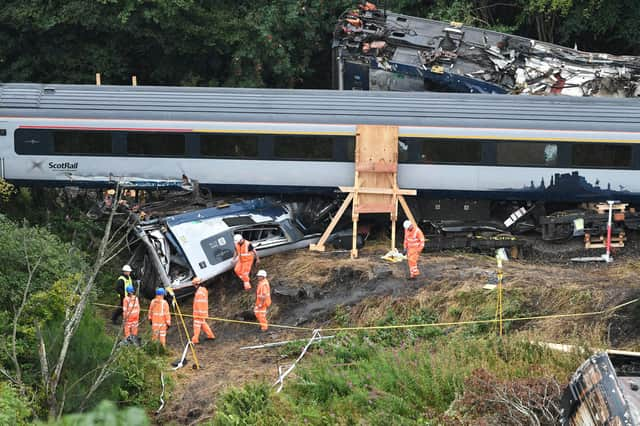Scotland’s infrastructure must be made 'climate ready' - Hannah Smith


Every year we produce a document on a topic of vital importance, not just to the civil engineering sector but to wider society. After all, Scotland’s infrastructure – transport, energy, buildings, water, and digital connectivity – underpins every aspect of our economy and our communities.
This year we were writing around a constantly changing environment. Even during the Covid-19 pandemic, illustrations of our climate emergency are never far from the headlines. But of all the stories around the impact our weather has on our infrastructure, it was August’s nationwide flooding which brought it sharply to the fore.
Advertisement
Hide AdAdvertisement
Hide AdThe A93 at Rest and Be Thankful was once again closed because of a major landslip, a huge part of the A68 collapsed in the Scottish Borders, there was a breach of the Union Canal which forced the closure of the Edinburgh to Glasgow rail line and, most tragically, three people were killed when a train derailed after hitting a landslip on the line in Stonehaven.


These incidents were not the catalyst for our report, but rather continually reinforced our view that large portions of Scottish infrastructure simply were not built to withstand the weather conditions increasingly being seen today.
Our call for urgent action, therefore, cannot be dismissed as alarmist. Our sector has for years been considering environmental issues when developing new projects. However, the evidence is clear that without a programme of retrofitting and adaptation of our existing assets, we risk increased repair bills, poorly performing infrastructure, and even a series of failures – with potentially devastating consequences. We must make our infrastructure climate ready.
The recommendations from this report were submitted as our response to the Scottish Government’s Draft Infrastructure Investment Plan which it published for consultation in September.
The five-year plan is wide-ranging, setting out a range of welcome ambitions for Scotland’s future infrastructure landscape, but in our view it needs more focus on increasing our infrastructure resiliency in the face of climate change.
We don’t underestimate the challenge – in scale, in cost and in logistics. That’s why ICE Scotland is recommending the establishment of an Infrastructure Adaptation Task Force which would, for the first time, gather experts to consider exactly what steps to take to make Scotland’s infrastructure resilient to climate change impacts.
A Task Force would help us work across infrastructure sectors, harnessing collective expertise to consider a range of issues – from using existing mechanisms (such as procurement, planning frameworks and the Scottish National Investment Bank) to how to sustainably fund such a programme work work.
The benefits of action far outweigh the costs – not just in terms of saving on future repair costs and keeping the economy moving. A structured programme of adaptation would lead to job creation, workforce development and skills training. Well-performing infrastructure would boost productivity – creating business opportunities and removing regional disparities.
Advertisement
Hide AdAdvertisement
Hide AdWell-designed and resilient infrastructure can ensure communities thrive without disruption from weather events, helping create places we want to live, socialise and work in. Use of nature-based infrastructure solutions can be positive for the environment and support our physical and mental health. Good infrastructure can even help reduce inequalities – for example, adaptations to a public transport network can incorporate better disabled access; flood management schemes can open up space for affordable housing. The scale of the opportunity is staggering.
Events of 2020 have shown that there is no time for complacency – the impact of climate change on Scotland’s infrastructure is being felt today. We need decisive action, backed by expertise and long-term commitments. With the right stewardship, our infrastructure assets can deliver economic, social and environmental value; but only if that infrastructure is climate ready.
Hannah Smith, Director, ICE Scotland, State of the Nation 2020: Climate Ready Infrastructure can be found at www.ice.org.uk/Scotland
Comments
Want to join the conversation? Please or to comment on this article.